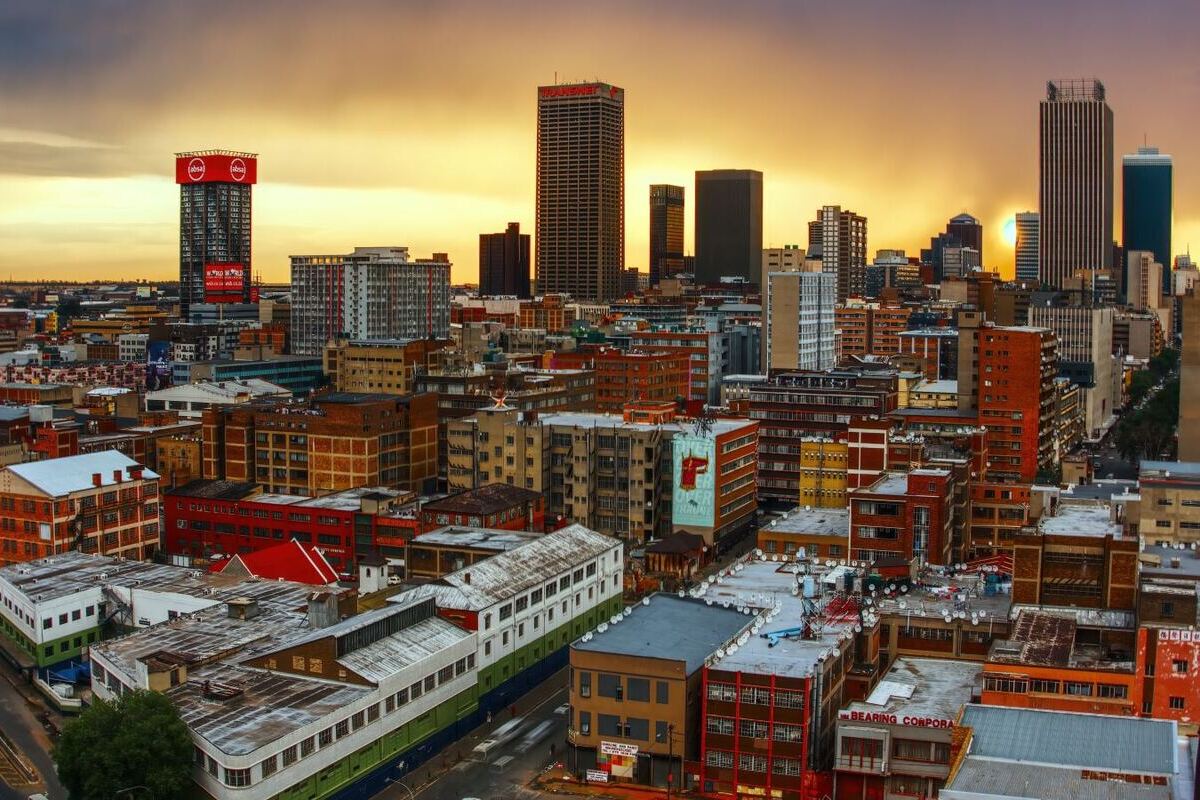Johannesburg is the largest city in South Africa and is often called the economic heart of the country. It was founded during the gold rush and eventually became one of the leading financial and industrial centers of the entire continent. This is a city where the past is closely intertwined with modern life, and its cultural diversity is truly remarkable. Johannesburg is known for its rich history, fascinating architectural landmarks, modern districts, and numerous museums. Here are some captivating facts about this city that you may not know.
- Johannesburg was founded in 1886 after the discovery of gold deposits in the Witwatersrand region. Since then, it has gained the nickname “the golden city”. Thanks to this, it developed rapidly and grew into one of the largest metropolises in Africa.
- Johannesburg is not the capital of South Africa. Although it is often mistakenly thought to be the main city, the official capitals are Pretoria, Cape Town, and Bloemfontein. However, the most important economic and financial institutions are concentrated here.
- The city does not lie by the sea. Johannesburg is located more than 500 kilometers from the coast, yet it is still the largest hub of capital and resources in the region. This makes it unique among the world’s metropolises.
- Johannesburg is considered one of the greenest cities in the world. Over 10 million trees grow within its boundaries, earning it the nickname “urban forest”. Such an abundance of greenery helps to combat dust and air pollution.
- The city is home to one of the largest urban parks in Africa – Emmarentia Park. It is a favorite leisure destination for both locals and tourists. The park features lakes, a botanical garden, and areas for picnics.
- Johannesburg has more skyscrapers than any other African city. Among them is the Carlton Centre, which stands 223 meters tall and was long regarded as the tallest building on the continent. Its observation deck offers an impressive view of the city.
- The city contains the district of Soweto, which became a symbol of the fight against apartheid. It was here in 1976 that a student uprising took place, marking a significant turning point in the nation’s history. Today, Soweto is a popular tourist destination.
- Johannesburg is home to the renowned Apartheid Museum. Opened in 2001, it tells the story of South Africa’s complex history, the struggle for human rights, and the fight for equality. It is one of the most important sites for understanding the country’s past.
- The city has a wealth of cultural centers and theaters. Notably, the Johannesburg Theatre is the largest theater complex south of the Sahara. It hosts international festivals, concerts, and stage performances.
- Johannesburg is known for its multicultural population. Representatives of dozens of ethnic groups live here, creating a unique cultural mosaic. This diversity is reflected in the city’s cuisine, music, and art.
- The city is home to one of South Africa’s largest artificial lakes – Midrand Lake. It was created to ensure water supply but has also become a popular recreation spot. Water sports events and cultural activities are often held here.
- Johannesburg has historically been a hub for gold and diamond mining. Although the scale of mining has declined today, the city is still strongly associated with precious metals and gems. This legacy has left a significant mark on its development.
- The University of the Witwatersrand, South Africa’s largest university, is located in Johannesburg. It is renowned for its scientific contributions and for major archaeological discoveries made on its campus.
- Johannesburg is situated at an elevation of around 1750 meters above sea level. This makes it one of the highest megacities in the world. The altitude influences the climate, making it milder compared to many other African cities.
- The city is served by one of Africa’s busiest airports – O. R. Tambo International Airport. It handles millions of passengers annually and serves as the country’s main air gateway. The airport boasts modern infrastructure and extensive international connections.
- Johannesburg is often called “Egoli”, which means “place of gold” in the Zulu language. This nickname highlights its historic role in the gold mining industry. It has become firmly embedded in the city’s identity.
- Near the city lies a UNESCO World Heritage Site – the “Cradle of Humankind”. Here, remains of australopithecines considered ancestors of modern humans have been discovered. This site holds immense importance for archaeology and anthropology.
- The city has a well-developed transport system, including the modern Gautrain rapid rail. It connects Johannesburg with Pretoria and the airport. This makes commuting significantly easier for both residents and visitors.
- Johannesburg is one of Africa’s largest economic centers. It houses the headquarters of major banks, corporations, and the stock exchange. The city plays a key role in the financial life of the continent.
- The climate in Johannesburg is subtropical, with warm summers and cool, dry winters. Rain falls mainly in the summer months. This creates comfortable conditions for both living and traveling.
Johannesburg is a city that amazes with its diversity and unique history. Interesting facts reveal it as a place where the past and present blend harmoniously. Incredible facts show that it is not only an economic powerhouse but also a cultural hub of South Africa. You may not have known many details before, but now Johannesburg appears in a completely new light.





